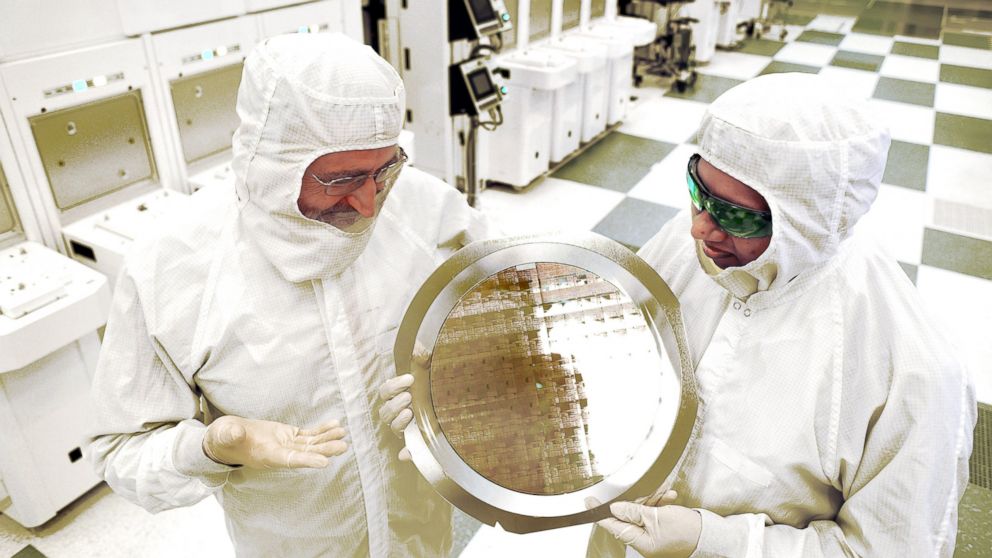Moore's Law Lives On: How IBM Chip Pushes the Standard for Computing Power

— -- Moore's law, the standard for advancing computing power, is still holding true 50 years later with IBM’s announcement of a prototype chip featuring transistors so thin they're 1/10,000th the width of a human hair.
In 1965, Gordon Moore, a co-founder of Intel, predicted the number of tiny electrical switches that could be placed on a computer chip, called transistors, would double about every two years.
That has largely held true; look no further than the computers, cameras, phones and music players that are now condensed into a single smartphone. But as transistors continue to shrink, some engineers have predicted Moore's law could collapse within the decade because of the exponential difficulty of shrinking transistors beyond a certain point.
The prototype chip unveiled this week by IBM has managed to keep Moore's law alive with transistors measuring 7 nanometers (a unit measuring one-billionth of a meter.)
"This is research that has been done and is not an actual product, but it is a great example that Moore’s law continues and shows the potential for smartphones, tablets, PCs and even cars to be twice as smart as they were before at the same energy level," Patrick Moorhead, an analyst at Moor Insights & Strategy, told ABC News.
The breakthrough, resulting from research at IBM and the State University of New York Polytechnic Institute in Albany, could allow as many as 20 billion transistors to be placed on a chip the size of a fingernail and is half the size of the current 14 nanometer standard, company officials said.
While the technology is a prototype chip, it could have a tremendous impact "on the anticipated demands of future cloud computing and Big Data systems, cognitive computing, mobile products and other emerging technologies," according to the company.
The breakthrough chip is the result of a $3 billion investment IBM made last year in partnership with the state of New York, Samsung and other technology suppliers for the purpose of chip research and design, officials said.



